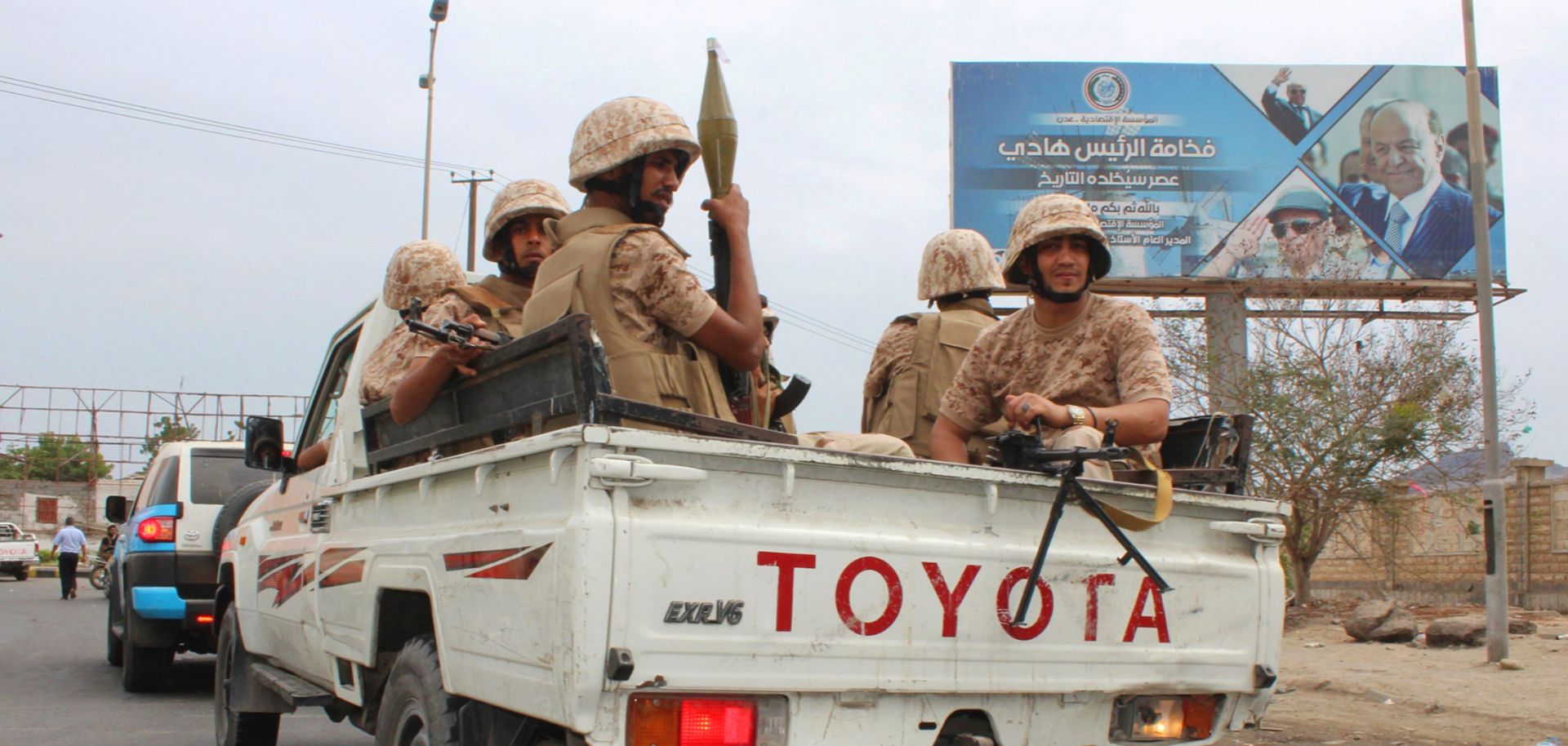GUIDANCE
What's the Future of U.S. Support for the Saudi War in Yemen?
Nov 3, 2018 | 07:00 GMT

Fighters from Yemen's southern separatist movement sit in the back of a pick-up truck in the country's second city of Aden in January, during clashes with forces loyal to the Saudi-backed president. No matter how strong congressional opposition to the conflict becomes, the United States is unlikely to entirely cut off ties to the Saudi war effort because of shared goals of containing Iranian influence and combating the threat of ballistic missile launches into Saudi and Emirati territory from Houthi-held territory in Yemen.
(SALEH AL-OBEIDI/AFP/Getty Images)
Subscribe Now
SubscribeAlready have an account?
